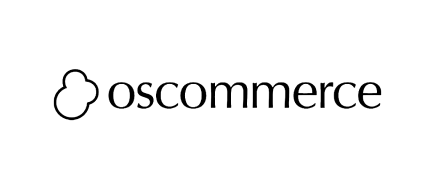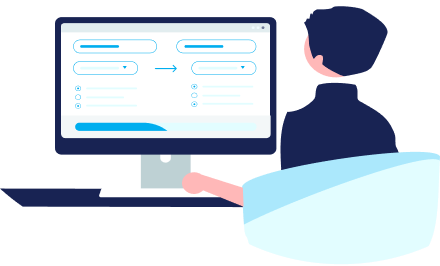osCommerce Migration
Seeking a seamless osCommerce Migration? Expertly migrate from osCommerce to your new platform with Cart2Cart's fully automated, secure service. Our proven process guarantees zero downtime for your current store, ensuring your business operations remain uninterrupted. Forget complicated manual transfers; Cart2Cart handles your complete data migration—including all products, customers, orders, vital SEO URLs, and more—swiftly and safely, typically completing in just a few hours. Trust Cart2Cart, the definitive solution for a secure, efficient, and stress-free eCommerce platform transition, backed by unparalleled expertise.Supported versions: osCommerce 2.3.4

How to Migrate to osCommerce
This step-by-step guide details how to securely migrate to osCommerce from any other e-commerce platform using Cart2Cart, ensuring complete data integrity for your online storefront.
- Register and Initiate: Create a Cart2Cart account to begin your platform switch. This initial step is free and takes only a minute.
- Connect Your Source Store: Provide the credentials for your current platform to allow secure API access for the data transfer.
- Connect osCommerce Target Store: Download the Connection Bridge file and upload it to your osCommerce store's root folder via FTP. This establishes a secure link for the data transition.
- Select Data and Options: Choose which data entities to move, including products, SKUs, and customer orders. Configure crucial options like 301 redirects to preserve your SEO rankings.
- Run a Free Demo Migration: Launch a free test transfer to move a limited set of your data. This allows you to check the results directly in your new osCommerce store before the full replatforming.
- Launch the Full Migration: Once satisfied with the demo, start the full migration. The process runs on our servers, ensuring no downtime for your business.
Pro-Tip: Be aware that during the migration, multi-store features may have limitations, and SEO options specifically for blog content are not included in the standard transfer.
Automated migration
Just set up the migration and choose the entities to move – the service will do the rest.
Try It Free
Data Migration Service Package
Delegate the job to the highly-skilled migration experts and get the job done.
Choose Package
What data can be migrated from/to osCommerce
-
Products
-
Product Categories
-
Manufacturers
-
Taxes
-
Customers
-
Orders
-
Reviews
-
Multistore
-
Multiple Languages
Choose all the extra migration options and get 40% off their total Price
We’re committed to protecting our customers’ data security. Check out our Security Policy
The Cart2Cart service has all the necessary functionality to migrate store databases on osCommerce of any size and complexity. Below are the most popular migration directions among our customers:
Help Center
Let’s figure out everything about osCommerce migration through
Cart2Cart.
Discover our checklist, related articles, and answers on frequently asked questions.

 June 7, 2023
June 7, 2023 The Ultimate Guide to eCommerce Migration: How-To Directions and Best Practices
Read full articlePay only for what you migrate - the cost depends on the number of records to be moved
Get Your Transparent osCommerce Migration Cost Estimate
Use our tool to instantly generate a transparent estimate for your osCommerce migration cost, tailored precisely to your needs. You'll receive a clear breakdown of osCommerce migration pricing with no hidden fees, giving you the exact osCommerce migration price needed to plan your move confidently to osCommerce.
osCommerce Monthly Pulse: Analyzing the Resilience of a Legacy Workhorse
In an e-commerce landscape dominated by the rapid-fire feature releases of SaaS giants, it is easy to overlook the steady, persistent pulse of foundational platforms like osCommerce. This month's analysis moves beyond the metrics of hyper-growth to examine a different, yet equally critical, narrative: one of stability, community-driven maintenance, and the enduring value proposition for a deeply entrenched user base. For business leaders operating on or evaluating legacy systems, osCommerce's story is not about disruption, but about deliberate, calculated endurance.
Assessing the Enduring Market Niche
While osCommerce no longer commands a significant share of the top one million e-commerce sites, its influence is measured not in new acquisitions but in its established, long-tail footprint. Current data indicates that thousands of businesses continue to rely on the platform, many with over a decade of operational history. The strategic insight here is not one of market capture, but of user retention and dependency. For these merchants, the platform is not merely a storefront; it is the deeply integrated core of their operations, often with years of bespoke modifications that make migration a costly and complex proposition. This "stickiness" defines osCommerce's modern market position as a stable, if niche, player.
Core Stability and Modernization Efforts
This past month saw the continued refinement of the osCommerce v4.x branch, with a focus on infrastructure compatibility rather than flashy features. The core development team has been prioritizing full compatibility with PHP 8.2, a critical update that directly impacts security and server-side performance. The "so what" for merchants is a significant reduction in technical debt and a clear path forward for hosting. By ensuring the platform runs smoothly on modern server architecture, the project mitigates the primary risk associated with legacy software: obsolescence. This move provides business owners with the confidence that their core technology stack remains secure and supportable for the foreseeable future.
The Community-Driven Development Engine
The health of the osCommerce ecosystem is best measured by the activity within its community forums and third-party development channels. This month, we observed a notable uptick in updates to community-contributed payment gateway modules, particularly for European providers, and several key fixes for shipping calculators. This activity is a powerful signal that the platform's open-source nature remains its greatest asset. Unlike closed SaaS ecosystems, merchants are not beholden to a corporate roadmap. Instead, the community of developers and agencies continues to build and maintain the essential integrations needed to conduct business, ensuring the platform adapts to regional and technological shifts from the ground up.
Focus on Foundational Enhancements
Instead of a single "flagship" release, the recent development cycle has delivered a series of quality-of-life improvements to the administrative backend. The most significant of these is a refinement of the batch order processing interface, which now includes more robust filtering and status update capabilities. For a high-volume merchant, this is not a minor tweak; it's a direct improvement to operational efficiency. This focus on the administrative experience demonstrates a deep understanding of the core user's daily workflow. The strategic value lies in reducing friction and manual labor, which translates directly into lower operational costs and faster fulfillment times.
Strengthening the Core: A Proactive Security Posture
A proactive security update was pushed to address a potential cross-site scripting (XSS) vulnerability within the customer account management section. While no active exploits were reported, the patch was released as a preventative measure. For any business leader, particularly those handling sensitive customer data, this commitment to security is paramount. In the self-hosted e-commerce world, the platform's dedication to identifying and patching potential vulnerabilities is the bedrock of trust. This update reinforces the message that osCommerce is being responsibly stewarded, providing a crucial layer of assurance for its installed base.
Maintaining Global Commerce Compatibility
Reflecting its established international user base, a key update was released for the platform's core currency conversion module. The enhancement involves integrating with a more reliable and frequently updated exchange rate API, ensuring greater accuracy for cross-border transactions. This move is not about entering new markets, but about better serving existing ones. For small to mid-sized businesses with a global clientele, accurate, real-time currency data is fundamental to maintaining customer trust and protecting margins. This enhancement ensures osCommerce remains a viable tool for merchants who have built their businesses on international trade.
The Tenacity of the Installed Base
While new, high-profile brands are unlikely to migrate to osCommerce, the more telling story is who continues to thrive on it. Consider the archetype of a specialized B2B supplier of industrial components that has run on osCommerce for over 15 years. Their decision to stay is strategic. The platform is deeply woven into their ERP and custom inventory systems—a complex web of integrations that would require a seven-figure investment to replicate on a modern SaaS platform. Their continued success highlights osCommerce's ultimate value proposition: unparalleled customizability and control for businesses with unique, entrenched operational workflows. For them, the platform is not a legacy liability but a battle-hardened, fully-owned asset.
Source: Analysis based on osCommerce public development repositories, community forum discussions, and third-party market share data from BuiltWith and W3Techs for the preceding month.
Just set up the migration and choose the entities to move – the service will do the rest.
Try It FreeDelegate the job to the highly-skilled migration experts and get the job done.
Choose Package
















